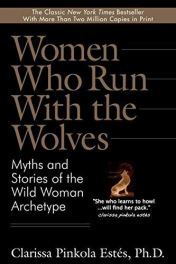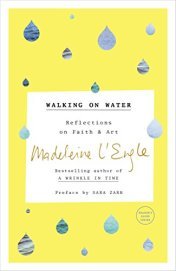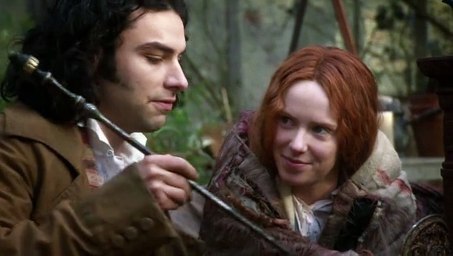Archetypal Character Arcs, Pt. 17: The Flat Archetype of the Lover
 As Doris Day used to say, “Everybody loves a lover.” While that might not be universally true, what is true is that the Lover archetype is one inherent and even integral within the human life cycle. Although it is a deeply nuanced archetype that evolves with us for most of our lives—and shows up in many guises—it is particularly foundational to the First Act of our lives, when it first emerges in response to the coming-of-age lessons of the Maiden Arc.
As Doris Day used to say, “Everybody loves a lover.” While that might not be universally true, what is true is that the Lover archetype is one inherent and even integral within the human life cycle. Although it is a deeply nuanced archetype that evolves with us for most of our lives—and shows up in many guises—it is particularly foundational to the First Act of our lives, when it first emerges in response to the coming-of-age lessons of the Maiden Arc.
The archetypal Lover, as I will be discussing it here, is not simply a person who falls in love. Obviously, falling in love can happen at any stage of one’s life and in relationship to any of the progressive archetypal character arcs. Specifically, the Lover as a Flat archetype within this particular system of archetypes is in reference to “first love” or “young love.” It is the period of awakened love and sexuality in which a character is just beginning to explore what it might mean to no longer be “one” with the tribe, but simply “one” with another “one.”
This is not a mature love. It is the intense, wonderful, passionate, exploratory, sometimes frightening first love of the young adult. Although it signifies growth, it is also an ironically destructive force, since it signifies the means and the route by which the youth finds a path away from the necessary “mother love” of the parents, from whom he or she has only so recently begun to individuate, and into the possibility of a supporting love and union with another individuated person.
As the “resting” period between the crucibles of the Maiden and the Hero Arcs, the Lover also represents the foundation the Hero will require for moving forward into his all-important Quest. As you may remember, the Hero Arc, which completes the youthful initiations of life’s First Act, is ultimately about learning to submit one’s personal Power to a worthy Love.
The Love of the Hero is not specifically a romantic love (although it is often represented as such). Rather, it is a Love that allows him to re-integrate as a mature adult with the tribe from which he has now successfully individuated. His explorations of romantic love both prior to and during his transformative arc rest upon the Lover archetype that knits together the journeys of the Maiden and the Hero.
Because the Lover has so far completed only one arc (the Maiden), the love experienced in this period is still unformed, possessive, immature, and often un-individuated. It is the teenage love eulogized in so many pop songs. The love that will be experienced later, in the Hero arc, is the maturing of this potential into a deeper, richer, more developed love—one that can give without giving away one’s self.
The Lover Archetype: Empowered YouthPrevious Arc: Maiden
Subsequent Positive Arc: Hero
Subsequent Possible Negative Archetypes: Coward (passive); Bully (aggressive)
There is a reason YA romance is so popular. At hardly any other time in life (at least not consistently) is one likely to experience the overwhelming intensity of emotion that is available when you are young enough to be in love but not yet fully emerged into the adult you will become. Young love is almost a merging—not always completely centered or healthy—but always transformative.
What is important about placing the Lover archetype between the Maiden and the Hero Arcs is the emphasis upon the character’s newly growing agency (which is closely linked to burgeoning sexuality). The previous Maiden Arc focuses upon an awakening from childhood into adulthood. That arc ends with the character beginning to step into adult power—and that power is very likely to be expressed (openly or otherwise) via the character’s budding pursuit of romance.
Like the Child archetype before it, the Lover archetype clearly represents a volcano of transformation. But as discussed here, the Lover is a “Flat” archetype. This is not because falling in love, especially for the first time, does not create massive transformation within a person. Rather, it is because the actual change that is linked to growing into and out of this archetype is addressed in the previous Maiden Arc and subsequent Hero Arc.
The Lover’s Normal WorldThe Lover is a character who has completed the previous Maiden Arc. The archetype can be represented by a person of any age, but chronologically within the cycle, the character is still quite young—mid to late teens. As shown in so many YA stories, this is a character who is perhaps just finishing up high school (and preparing for the Hero’s Quest that will follow). The character senses the changes gathering on the horizon, but does not yet need to fully face them.
Having gained the right and ability to move beyond the walls of the family Home in the Maiden Arc, the Lover’s Normal World is now represented by the slightly larger confines of the Village. The character’s world exists beyond simply that of parents and siblings. Friends, teachers, and employers are now relationships that he or she must navigate on the way to finding a grown-up role amongst the tribe.
The Lover still has quite a bit in common with the Child, but the foundational innocence is now gone. The Lover now knows that the world is not unchanging—and he or she is not unchanging in it. There is a great deal of uncertainty in the world that the character was not previously aware of. The Lover’s theme song might be “Que Sera, Que Sera” (since we seem to be on a Doris Day kick today):
When I was just a little girl
I asked my mother, what will I be
Will I be pretty
Will I be rich
Here’s what she said to meQue sera, sera
Whatever will be, will be
The future’s not ours to see
The character is no longer completely at ease within this world, and as a result the world itself will be challenged to change itself to accommodate this character who is suddenly no longer a predictable Child.
The Lover’s Relationship to the Thematic TruthWhat Truth has a character so young and unsteady as the Lover to communicate to supporting characters? Unlike the Child, who in some ways represents “all” potential truths simply because the Child does not yet have any personal truths, the Lover now has at least one Truth—gained from the transformation of the Maiden Arc. The essence of that Truth is “Personal sovereignty is necessary for growth and survival.”
The Lover is such a young character that he or she is unlikely to be particularly articulate about this Truth. This character’s ability to create transformational change in others is far less about “telling” them anything and much more about the catalyzing influence of the youthful person’s very existence. The young flame burns brightly, and it acts as both effortless inspiration to those who would follow and unspoken reminder to those who have gone before.
How the Lover Creates Change in Supporting CharactersIn discussing the Lover here, we are discussing the interstitial period when a character has individuated enough to fall in love but has not yet been asked to fully grapple with the ramifications of this great life change (which will occur in the Hero Arc). Instead, the Lover is a static character who is able to influence change upon others. Having undergone the Maiden Arc, this character already knows something that many of his or her peers will not yet have learned (and, indeed, something that many of the adults have either never fully integrated or somewhat forgotten).
As with all the Flat archetypes, the Lover is most likely to encourage change in those characters who are “behind” within the cycle. At this point, that means the characters most likely to be changed by a Lover protagonist are those who are on the Maiden Arc themselves.
Most obviously, the Lover is likely to encourage a transformation in the very person he or she loves. Falling in love for the first time can be the transformational spark that sets off the Maiden Arc. It is certainly possible (and common) for both young characters to be concurrently taking the Maiden Arc. However, it is also possible that the Lover character, who has already arced, is the one catalyzing the transformation for the other person.

Women Who Run With the Wolves by Clarissa Pinkola Estes (affiliate link)
Indeed, the ability to choose wisely and well whom to love is one of the great challenges of this individuation period, as Clarissa Pinkola Estés points out in Women Who Run With the Wolves:
Types of Stories That Feature a Lover ProtagonistA lover cannot be chosen a la smorgasbord. A lover has to be chosen from soul-craving. To choose just because something mouth-watering stands before you will never satisfy the hunger of the soul-Self.
The Lover most obviously appears in love stories—usually coming-of-age love stories. Sometimes these stories offer happy endings; just as often, and perhaps more realistically, they end tragically with the realization that however formative this early love affair, it cannot last into the next journey.

Sacred Contracts by Caroline Myss (affiliate link)
But Lover stories don’t absolutely have to be about a protagonist who falls in love with another person. What is important in utilizing this archetype is recognizing it as the interstitial period between the transformations of Maiden and Hero. Ultimately, what the Lover represents is discovery. In Sacred Contracts, Caroline Myss speaks of the Lover archetype (which she references more broadly and does not confine to this early period of life) as being defined by “passion” and “devotion”:
This archetype appears not only in those who are romantically inclined, but also in anyone who exhibits great passion and devotion. One can be a Lover of art, music, gardening, Persian carpets, nature, or needlepoint. The key is having a sense of unbridled and exaggerated affection and appreciation of someone or something that influences the organization of your life and environment.

Walking on Water by Madeleine L’Engle (affiliate link)
In Walking on Water, Madeleine L’Engle quotes James Baldwin’s analogy of the Lover’s transformative qualities in comparison to the artist’s:
…the role of the artist is exactly the same as the role of the lover. If I love you, I have to make you conscious of the things you don’t see.
We can find this in many coming-of-age stories which simultaneously develop the Lover character’s young romances alongside an exploration of some passion or talent, such as that of the Pre-Raphaelite painters of the 19th-center as portrayed in the BBC ‘s (not-particularly-historical-or-flattering) mini-series Desperate Romantics.

What defines a Lover story (in comparison to a Maiden or Hero story) is its somewhat episodic nature. Regardless of whatever joy or sorrow the protagonist may experience, and regardless how drastically the supporting characters may evolve, the story’s symbolic setting will not change. The Maiden Arc sees the protagonist move from Home to Village, and the Hero Arc sees the protagonist move from Village to Kingdom. But the Lover remains in the Village throughout. The Hero Arc will beckon later on.
Examples of the Lover:Examples of the Lover archetype include the following.
Everybody in Sense & SensibilityEverybody in Desperate RomanticsTom in 500 Days of SummerWestley and Buttercup in The Princess BrideRomeo & Juliet in Romeo & JulietAugustus Waters in The Fault in Our StarsStay Tuned: Next week, we will study the Flat archetype of the Parent.
Related Posts:
Story Theory and the Quest for MeaningAn Introduction to Archetypal StoriesArchetypal Character Arcs: A New SeriesThe Maiden ArcThe Hero ArcThe Queen ArcThe King ArcThe Crone ArcThe Mage ArcIntroduction to the 12 Negative ArchetypesThe Maiden’s Shadow ArchetypesThe Hero’s Shadow ArchetypesThe Queen’s Shadow ArchetypesThe King’s Shadow ArchetypesThe Crone’s Shadow ArchetypesThe Mage’s Shadow ArchetypesIntroduction the 6 Flat ArchetypesThe ChildWordplayers, tell me your opinions! Can you think of any further examples of stories that feature the Lover? Tell me in the comments!Click the “Play” button to Listen to Audio Version (or subscribe to the Helping Writers Become Authors podcast in Apple Podcast or Amazon Music).
___
Love Helping Writers Become Authors? You can now become a patron. (Huge thanks to those of you who are already part of my Patreon family!)The post Archetypal Character Arcs, Pt. 17: The Flat Archetype of the Lover appeared first on Helping Writers Become Authors.




